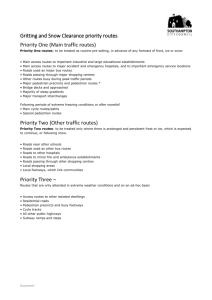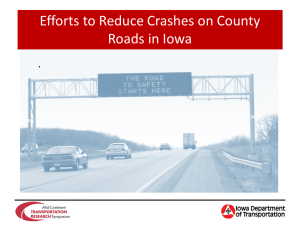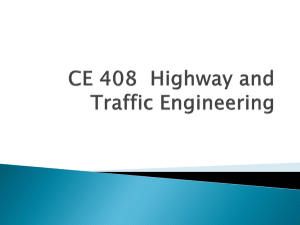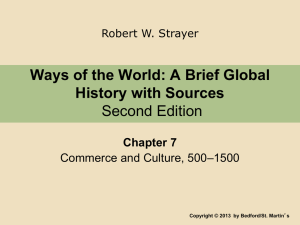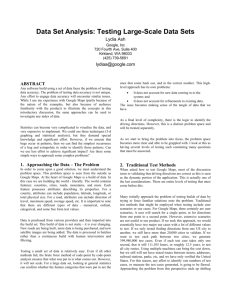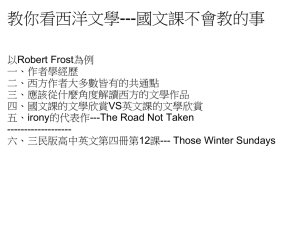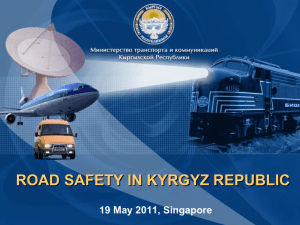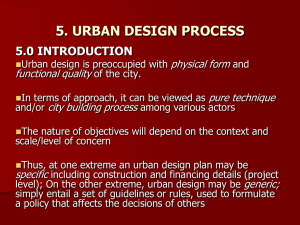LAF lost ways - Herefordshire Council
advertisement
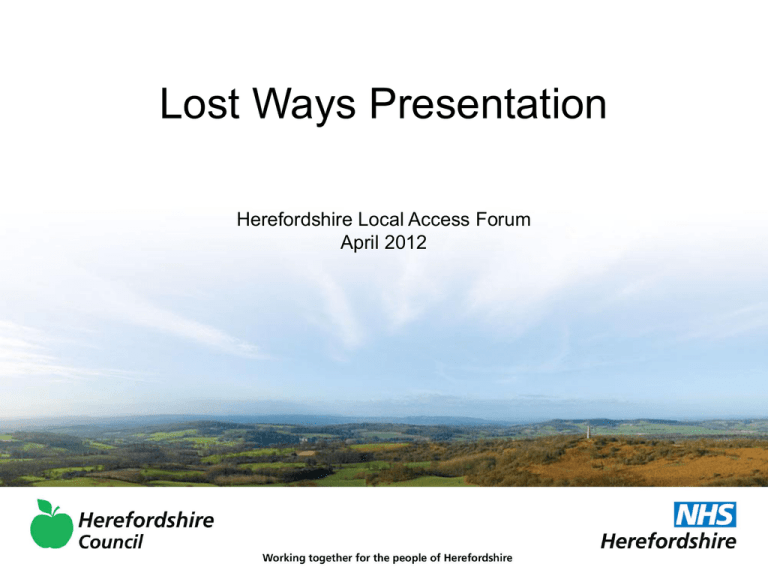
Lost Ways Presentation Herefordshire Local Access Forum April 2012 What are Lost Ways? • Lost ways are routes currently or once used by the public which not recorded on current highway records • These include routes which may have higher rights than are recorded such as equestrian rights over ways recorded as footpaths Key Terms • Unadopted Roads – not being maintained at public’s expense • Accommodation Roads – routes serving particular properties • White roads – Routes shown uncoloured on OS maps • Private Streets – Highways not publicly maintainable • Green lanes – Physical state of route • Private Roads – Roads with no highway rights How do routes become lost? • Never recorded on legal records • Not transferred from one record to another • Dropped off records i.e. Highways maintenance documents • Correct status not recorded What are the current Highway Records? List of Streets Definitive Map and Written Statements Streets Gazetteer How was the information for the current records provided? 1929 - Rural District Councils provided 'handover maps' showing roads they were maintaining 1950’s –Parish Council’s provided maps showing footpaths and bridleways together with 'Roads used as public paths' Herefordshire Council adds newly created routes, and any existing routes that it discovers What is the current situation? • Unrecorded roads and byways • Fragmented network & cul-de-sacs • Gaps, including discrepancies between maps and statements • Anomalies • Shortage of multi user routes • Lack of clarity about usage • More routes becoming lost and obstructed • Non maintenance • Complex systems involved in changing records • Costs Current situation continued • There has not been a historic record check for roads and byways • Paths are not always shown in compliance with the Written Statements and stop short of defined termination • Paths terminate on Parish Boundaries • Not all paths were submitted in 1950's, or were submitted but not accepted • Stepping forward report is not addressing these problems What evidence of this do we have? Written Statements, Parish submissions - Paths not accepted Historic records Highway Records The high number of DMMO applications Present situation The ways may physically exist and be in everyday use The ways may be claimed to be private, even when footpaths branch off them. The ways may be neglected, overgrown, obstructed, ploughed out of existence, and no longer in use All recording of unrecorded rights has to go through the same process. Options Carry on with current DMMO process and statement of priorities. Look at alternative methods of getting routes opened and used – paperwork catches up Lobby central government for change in law Proposals (unadopted and accommodation roads) Undertake a physical survey of roads and byways, i.e., unadopted and accommodation roads. Prioritise surveyed routes in conjunction with local demand (consultation) and wider network Research high priority routes and identify most appropriate recording method Record high priority routes Proposals (gaps) Identify and survey all gaps in the network. Prioritise paths in accordance with current categorisation. Consider what procedure to use to bring Definitive Map and Written Statements into line. Proposals – Parish Councils Provide parishes with copies of their 1950 submissions for review, together with maps showing what is presently recorded Parish Council to: Agree dedication with landowner or.. Submit DMMO claim or… State willingness or not to take forward Herefordshire Council to coordinate parish and county boundary paths. What changes to legislation would be helpful • The present SWG report if adopted would be of some benefit, but it does not:• address the need for a historic trawl of roads and byways • Clarification of the 2026 cut off date details Local Access Forum Agree with proposal set out Agree that a working party should put proposals into motion Advice that Herefordshire Council review current policies Provide support and guidance to Parish councils Seek national legislation change
